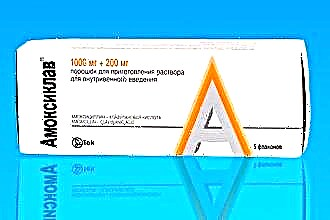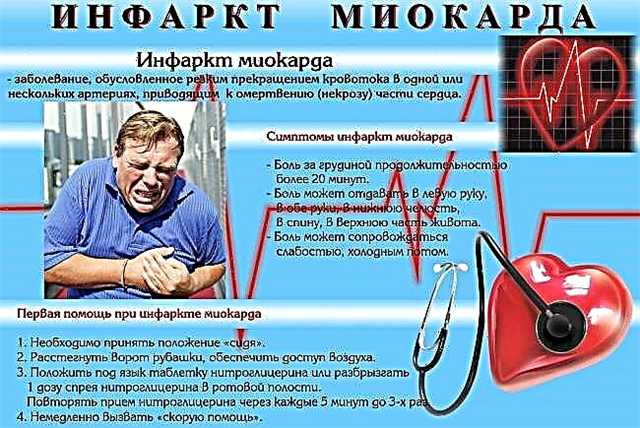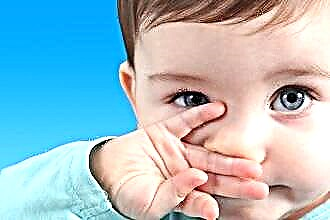Now drugs for the treatment of pharyngitis in children are available in every pharmacy. At the same time, the range of drugs for the throat is so wide that it can be difficult for parents to decide what exactly their child needs.
 You should not rely on the advice of a pharmacist when choosing a drug - hardly anyone will give a guarantee that you are being offered the most effective remedy, and not the most popular or advertised. In addition, a pharmacy worker is not a doctor, he cannot make a diagnosis, nor can he prescribe treatment.
You should not rely on the advice of a pharmacist when choosing a drug - hardly anyone will give a guarantee that you are being offered the most effective remedy, and not the most popular or advertised. In addition, a pharmacy worker is not a doctor, he cannot make a diagnosis, nor can he prescribe treatment.
That is why it is necessary to know what drugs for the treatment of throat exist, what is their effect, and for what symptoms they are required. The ability to navigate the spectrum of drugs for pharyngitis will help not only quickly cure the child, and save the family budget.
How to understand that a child has pharyngitis?
Pharyngitis is a disease in which the mucous membrane of the pharynx becomes inflamed. The pharynx is the organ that connects the mouth and larynx. With pharyngitis, the child's pharynx, as well as the soft palate, become red and swollen. A cloudy plaque may appear on the surface of the mucous membrane. Often, ulceration and punctate hemorrhages are noticeable on it.
An important point - with pharyngitis, inflammation does not affect the tonsils (tonsils). If the tonsils are enlarged, reddened or covered with pus, then the patient has tonsillitis (i.e. tonsillitis).
If the child can already speak, with pharyngitis, he will complain of the following discomfort:
- dry throat;
- perspiration;
- sensation of a foreign body in the throat;
- discomfort when swallowing;
- weakness, tiredness.
Often, with pharyngitis in children, the body temperature rises significantly, but it can remain at a normal level.
In most cases, the cause of pharyngitis is a cold, namely, an acute respiratory viral infection (ARVI).
Much less often, the cause of inflammation of the pharynx is a bacterial infection, usually streptococcal or staphylococcal. There is also fungal pharyngitis, herpesvirus, hemophilic, allergic, etc.
Drugs
How to treat pharyngitis in children? There are many drugs that can alleviate the condition of a sick child and prevent the development of complications. In general, complex treatment includes several areas:
- Etiological therapy aimed at destroying the root cause of the disease - virus, bacteria, etc. It is prescribed strictly by a doctor, depending on the causative agent of the disease.
- Anti-inflammatory therapy that removes the main pathogenetic factor of pharyngitis - inflammation. Includes preparations of local and general action.

- Symptomatic therapy that relieves the patient's condition. Includes the use of local and general pain relievers. It is worth noting that most anti-inflammatory drugs have an analgesic effect.
- Antiseptic treatment - prevents the development of secondary infections, creating conditions unfavorable for bacteria and fungi. Antiseptics include sprays, lozenges, and other topical preparations.
- Reparative therapy - drugs that accelerate the recovery of the mucous membrane.
Many modern drugs act simultaneously in several directions, for example, exhibiting antiseptic, anti-inflammatory and analgesic properties. We suggest that you familiarize yourself with the table, which presents the main groups of drugs prescribed for pharyngitis in children (see Table 1).
| Pharmacol. group | A drug | Release form and method of administration | Action | Age restrictions |
|---|---|---|---|---|
| Antibiotics | Summamed | Tablets or suspension for oral administration. Take once a day for 3 days. The dosage depends on the age. | Destroys staphylococcus, streptococcus and many other bacteria. | Allowed for children from 6 months. |
| Amoxiclav | Tablets or powder for suspension. Doses and frequency of administration depend on age and weight. The course is usually 10 days. | Destroys a wide range of bacteria, prevents the development of antibiotic resistance. | Without Borders | |
| Grammidin Neo | Lozenges. | Antibacterial, analgesic and anti-inflammatory action. | Allowed from 3 years old. | |
| Antiviral | Kagocel | Oral tablets. The first 2 days take 2 tablets three times a day, and in the next 2 days - 1 tablet three times a day. In total, the course is 4 days. | Interferon synthesis inductor. | Not suitable for children under 6 years of age. |
| Grippferon | Nasal spray. | Prevention and treatment of influenza and ARVI. | Without Borders. | |
| Viferon | Rectal suppositories. | Human recombinant interferon has antiviral and immuno-modulating effects. | Without Borders. | |
| Acyclovir | Oral tablets. | It is active against the herpes simplex virus, which affects the skin and mucous membranes. It is prescribed for the herpesvirus form of pharyngitis. | Without Borders. | |
| Heat-reducing | Paracetamol (Panadol, Tsefekon, Efferalgan and other drugs based on it) | Tablets or syrup. It is taken as needed, when the temperature rises above 38C-38.5C (depending on the patient's condition). | Has anti-inflammatory effect - relieves fever and reduces pain. | Without Borders. |
| Local antiseptics | Neo-angin, Strepsils, Suprima-Lor, Ajisept | Lollipops. Dissolve every 2-3 hours 1 piece (but not more than 8 lozenges per day). | The active ingredient is dichlorobenzyl alcohol amylmetacresol. Has an antiseptic, analgesic, anti-inflammatory effect. Reduces nasal congestion. | It is prescribed for children over 5 years old. |
| Septolet | Lozenges for sucking. Children should not suck more than 4 lozenges per day. | Contains cetylpyridinium chloride, due to which it has an antiseptic, antifungal, virucidal, analgesic effect. | Suitable for children from 6 years old. | |
| Chlorophyllipt | Lozenges or throat spray. After the first use, you must wait 8 hours to make sure there is no allergic reaction. | Chlorophyllipt has a powerful antiseptic effect, as well as a bactericidal effect against staphylococcus. | The effect on children has not been studied. Usually well tolerated, but should be used with caution. | |
| Oralsept | Spray for the throat. Apply 3-4 times a day. | Antiseptic and pain reliever. | From 2 years old. | |
| Hexoral | Throat rinse, irrigation spray, lozenges. Lozenges and solution are given to children who are able to control swallowing. The spray can be applied to the nipple. | Suppresses the vital activity of bacteria and fungi, including Candide. | The limitations are related to the way the drug is used. | |
| To restore the mucous membrane | Lizobact | Lozenges. | Lysozyme has an antiseptic effect, and pyridoxine accelerates regeneration. | From 5 years old. |
| Derinat solution | Solution for rinsing the throat and nasal instillation. You can repeat the procedure every 3-4 hours. | Derinat accelerates the healing of mucous membranes, increases resistance to infections. | Without Borders. |
Table 1 Drugs used for pharyngitis in children.
Features of the treatment of infants
 In children under 3 years of age, pharyngitis is difficult. The disease is accompanied by an increase in body temperature, a runny nose, and a cough. The child is capricious, does not sleep well, refuses to eat. The situation is complicated by the fact that most drugs for pharyngitis are not suitable for children of this age category. What to do? Firstly, any of your actions in relation to a sick child must first be discussed with a doctor.
In children under 3 years of age, pharyngitis is difficult. The disease is accompanied by an increase in body temperature, a runny nose, and a cough. The child is capricious, does not sleep well, refuses to eat. The situation is complicated by the fact that most drugs for pharyngitis are not suitable for children of this age category. What to do? Firstly, any of your actions in relation to a sick child must first be discussed with a doctor.
Secondly, you should ensure that the conditions in the home are favorable for recovery (unless hospitalization is indicated for you).
Maintain normal humidity and temperature in the patient's room, do not allow dust accumulation. Do not force-feed him, as this may induce vomiting.
How to treat a baby? Some topical medications can be given to children at reduced doses. For example, some sprays can be used to treat the nipples, or spray them on the inside of the cheeks 1-2 times a day. It is not recommended to irrigate the throat directly, as this can lead to laryngospasm. Drinking plenty of fluids is a good substitute for rinsing.
It is also worth paying attention to the nasal cavity - young children most often develop not isolated pharyngitis, but rhinopharyngitis (inflammation of the nasopharynx and pharynx). Many seawater-based nasal drops are suitable for children (Aqualor Baby, Nazol Baby, etc.). There are also vasoconstrictor drops for babies, for example, Vibrocil. They are used for complete nasal congestion.
If pharyngitis is accompanied by a fever, paracetamol-based drugs will help relieve the fever. If paracetamol does not help bring down the temperature for a long time, the child should be examined by an emergency doctor.
If, after taking paracetamol-based medicines, the temperature has not returned to normal, in no case increase the dosage or use stronger antipyretics.




